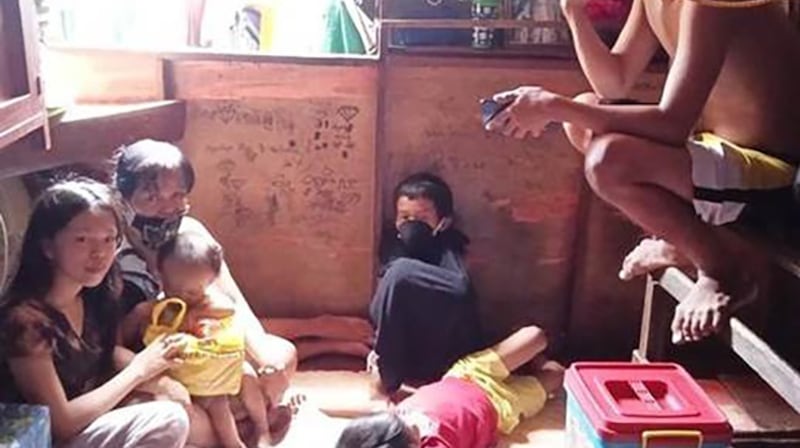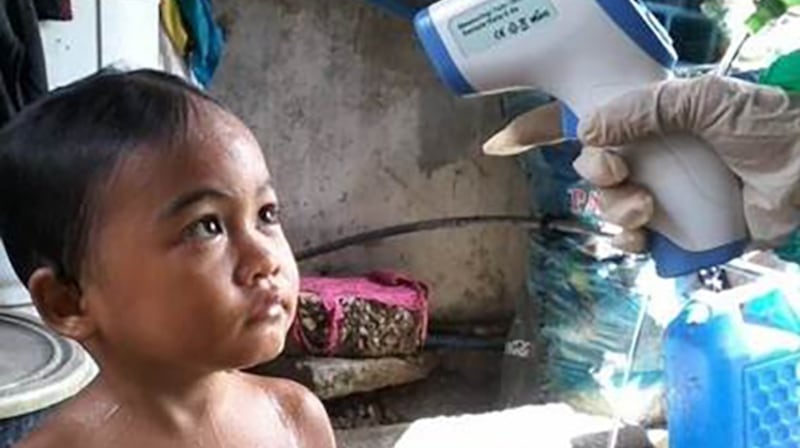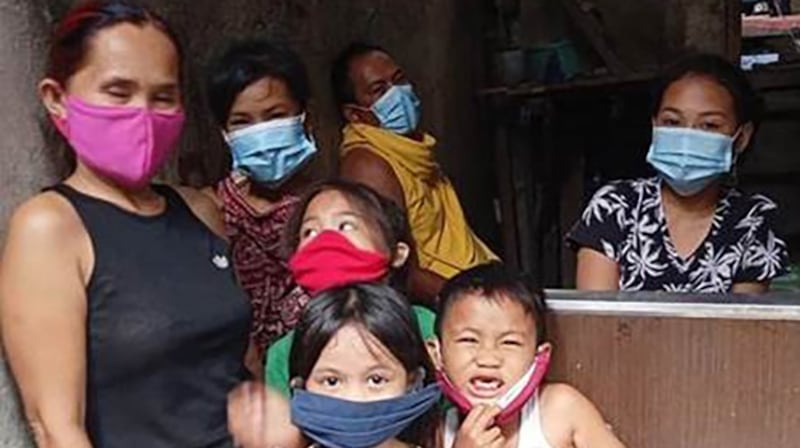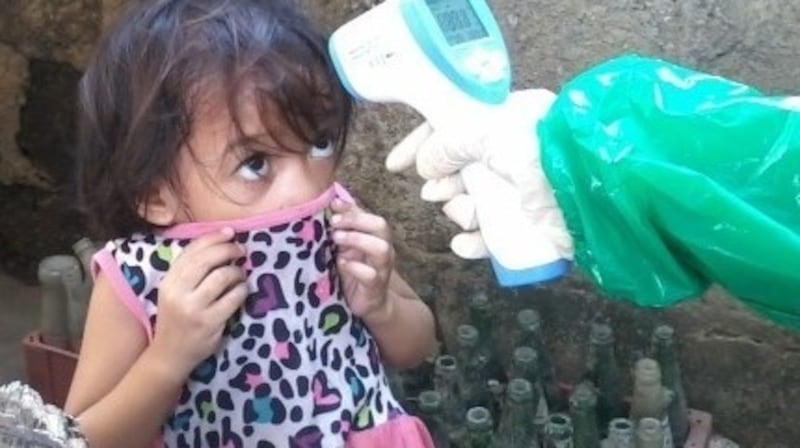Gavan Kennedy is from Glasson, Co Westmeath. He left Ireland in 1991 to go to George Washington University, in Washington, DC, and returned in May 2019 to film for the Wake Project at the James Joyce Centre's 80th-anniversary celebrations of the publication of Finnegans Wake.
Covid-19 lockdown began here in Cebu, the second-largest city in the Philippines, with 2.8 million inhabitants, on St Patrick's Day last year. It sits on Cebu island, which is about the size of Co Kerry but has a population of 4.7 million.
Since 2017 I've been on the road filming people around the world performing readings of pages from Finnegans Wake, the goal being to make a film version of James Joyce's modernist epic. I'd finished a shoot at University of the Philippines Diliman in December 2019 and was doing a workshop for the next shoot at Cebu Normal University when the world's strictest lockdown (according to the Economist) began.
Faced with indefinite confinement to my hotel room, I regarded a friend's invitation to volunteer for Bayanihan Mission as a blessing. One of our key projects in Cebu is a quarantine support program in Sitio Marna, a slum of about 2,100 people. As many as 80 per cent of Covid-19 cases in Cebu are estimated to occur in slums.

When the government announced the military-enforced lockdown in March 2020, it put many residents of Marna in an impossible situation. Most were daily wage earners, working on the streets. Many don't qualify for local government support because they are economic migrants from rural provinces who are not registered residents of Cebu City. No work and no savings meant no food. It left a self-sufficient people with a horrific dilemma: quarantine and starve, or earn money on the street and face detention.
Sitio Marna is a segregated, marginalised community where cramped living conditions make social distancing impractical. When we first visited Bayanihan Mission, on April 5th last year, we were swarmed by more than 600 hungry, fearful people. Our 200 food packs were gone in minutes. Parents, sometimes with 10 or more children, had no food nor hope of food coming. The sense of panic was difficult to witness.
The following day I met with Marna’s six purok, or neighbourhood, leaders, and we agreed that Bayanihan Mission would offer to guarantee food security for the entire population until lockdown ended, but only if every family signed a pledge to maintain 100 per cent home quarantine in support of their entire community. We recruited 18 young volunteers from within the community to pack and deliver the food to every resident’s door twice a week. We also recruited 12 health volunteers who took temperatures and monitored the 2,100 residents for Covid-19 symptoms every day.

Our first food deliveries began at the end of that week. The resident volunteers repacked and delivered 1,000kg of rice, 1,000kg of squash and 500kg of monggo, or mung, beans to the front door of every family in need while also monitoring everyone for symptoms.
Marna is usually is a hive of noise and activity, with gangs of children playing, people washing themselves in the narrow alleys and doing laundry, cocks crowing, dogs barking and people singing karaoke. But an eerie silence descended when the Mission pledge programme began. Up to half of Marna’s residents are under 12 years old, but not even a toddler’s cry could be heard. The alleys emptied, except for the PPE-clad volunteers quietly moving from door to door twice a week with food packs.
As the weeks turned into months, I began to wonder at the silent endurance of these people, waiting out Covid-19 in crowded 30-degree rooms without a fan, subsisting for a week on about €1.25 worth of food.
One might expect to meet despondent, exhausted people every day, yet a heartfelt smile and gratitude at every opened door were the norm. Exuberant children were thrilled to have their temperatures taken and monotony broken by a visitor. Their innocence in not realising their own suffering was revealing.

The programme was a year old last week. Sitio Marna is still the only slum in Cebu to have prevented Covid-19 contagion. It is a remarkable testament to the perseverance, community spirit and diligence of its residents and volunteers.
In the past month the Philippines has seen a 640 per cent rise in confirmed Covid-19 cases. There are now over 10,000 confirmed daily cases, more than doubling the previous peak, seen in August 2019. This number, however, belies the severity of the situation. Just 45,000 tests are being conducted across the country each day. The seven-day average positivity rate was 24 per cent on April 13th. In a population of 108 million, the implications of a 24 per cent positivity rate are staggering.
Until March this year the country had done remarkably well in battling transmission. Filipinos are committed to the collective effort. Masks and face shields outside the home are not even a topic of debate. Being archipelagic – the Philippines consists of more than 7,000 islands – has also helped contain transmission. The government simply shut down all interisland travel.
But towards the end of last year it decided that the economic impact of lockdown was causing more suffering than if lockdown ended and people returned to work. That hypothesis is about to be tested. Lockdown has ended. Interisland travel has resumed. Last month President Duterte returned the Manila metro area – population 20 million – to full emergency community quarantine in an effort to contain the record surge.

Compounding the dire situation is the slow rate of vaccine rollout here. As of April 15th, just 0.15 per cent of the nation's people had been fully vaccinated, compared with 6.54 per cent in Ireland and 21.15 per cent in the United States. Like many other poorer nations, Philippines is facing a huge vaccine–supply crisis.
In a recent report the Capital Economics think tank said: "The country's slow vaccination rollout will further hold back the recovery. By the end of the year, we think GDP will still be 12 per cent below its pre-crisis trend, which is the biggest gap of any country in the region." The reality is that the pandemic will disproportionately affect poorer nations' efforts to return to economic growth.
Covid-19 reminds us how connected we are, not only with families and friends but also with our neighbours, towns, nations and even continents. Covid variants from South Africa, the UK and Brazil are being found on sparsely populated islands here.
The Philippines is a poor country. Tragically, unlike many wealthier nations, there is still no light at the end of the tunnel. These gentle, joyful people are likely facing their darkest Covid days ahead.
You can find out more about Gavan Kennedy's Finnegan Wakes project here
If you live overseas and would like to share your experience with Irish Times Abroad, email abroad@irishtimes.com with a little information about you and what you do











